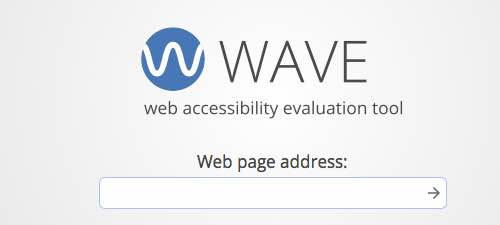What is WAVE, and How Can it Help You?
WebAIM, the Utah State University Web Accessibility Project has released significant updates to their WAVE suite of web accessibility testing tools. These changes make WAVE a more powerful asset in helping you test and implement highly accessible web content.
WebAIM’s offerings include the WAVE online testing service, Chrome and Firefox extensions, WAVE API (including its associated WAVE Runner service), and WAVE stand-alone API have all been updated. Due to slow review processes for Mozilla add-ons, the updated Firefox extension will be available in the coming weeks.
WebAIM’s Visual Design Updates
The WAVE interface for the online service and extensions has been updated to a modern design. We’re especially grateful to Claudio Luís Vera for his design recommendations and mockups. The sidebar is a bit larger and the functionality easier to use. Accessibility and usability have been improved.
The WAVE icons have all been redesigned and are now scaleable SVGs. The Structure panel (formerly called “Outline”) now shows regions and landmark structures, in addition to headings. The contrast tools have been overhauled and are now more usable.
A more robust color picker and Lightness sliders allow you to explore various contrasts – and you can see these applied to the relevant page elements. On Mac, you can use the eye-dropper tool in the color picker to extract and analyze foreground and background colors from the web page – even from images!
WebAIM’s Accessibility Test Updates
HTML regions and ARIA landmarks are now indicated as being structural elements, and several new tests/rules are in place:
- Broken ARIA menu error – an ARIA menu does not have required child elements.
- No page regions – no regions or ARIA landmarks were found on the page.
- ARIA description – Elements with aria-describedby are now indicated separate from elements with aria-label.
- ARIA button – Elements with role=”button” are now identified to prompt testing to ensure they are accessible.
- ARIA live region
- ARIA menu
- ARIA hidden
- ARIA expanded
- ARIA popup
Several existing tests/rules have been modified, including:
- Layout tables are now identified as alerts rather than as structural elements. This better encourages their disuse.
- Due to poor support and removal from HTML, images with a longdesc attribute are now shown with an alert.
Innumerable testing bugs fixes and improvements have been made. WAVE evaluations are now faster, more accurate, and less prone to false positives than ever before. Contrast checking has been overhauled for significantly improved accuracy and speed.
WAVE API and Stand-alone API Improvements
The WAVE API provides an interface where accessibility data for web pages can be easily collected. Simply send the API a URL and it will return structured accessibility data. This allows integration of WAVE into your own systems (such as CI/CD processes), reporting tools, and authoring tools. The API now uses a Chrome rendering engine. Processing is significantly faster and more powerful. The stand-alone API now supports analysis of most password-protected and intranet pages, scripted interactions with page content before evaluation, and much more. Several other features and changes are featured in the API changelog and on the WAVE Standalone API page. This functionality (and much more) will soon be integrated into Pope Tech – an enterprise-level testing and reporting tool that is based on WAVE. Pope Tech allows easy accessibility checking and monitoring of your entire web presence.
We’d Love to Hear From You
These are just a few of the new WAVE updates. More exciting improvements are in the works. We want to make WAVE the most useful and informative web accessibility testing platform. If you have feedback, bug reports, or recommendations, please let us know.




